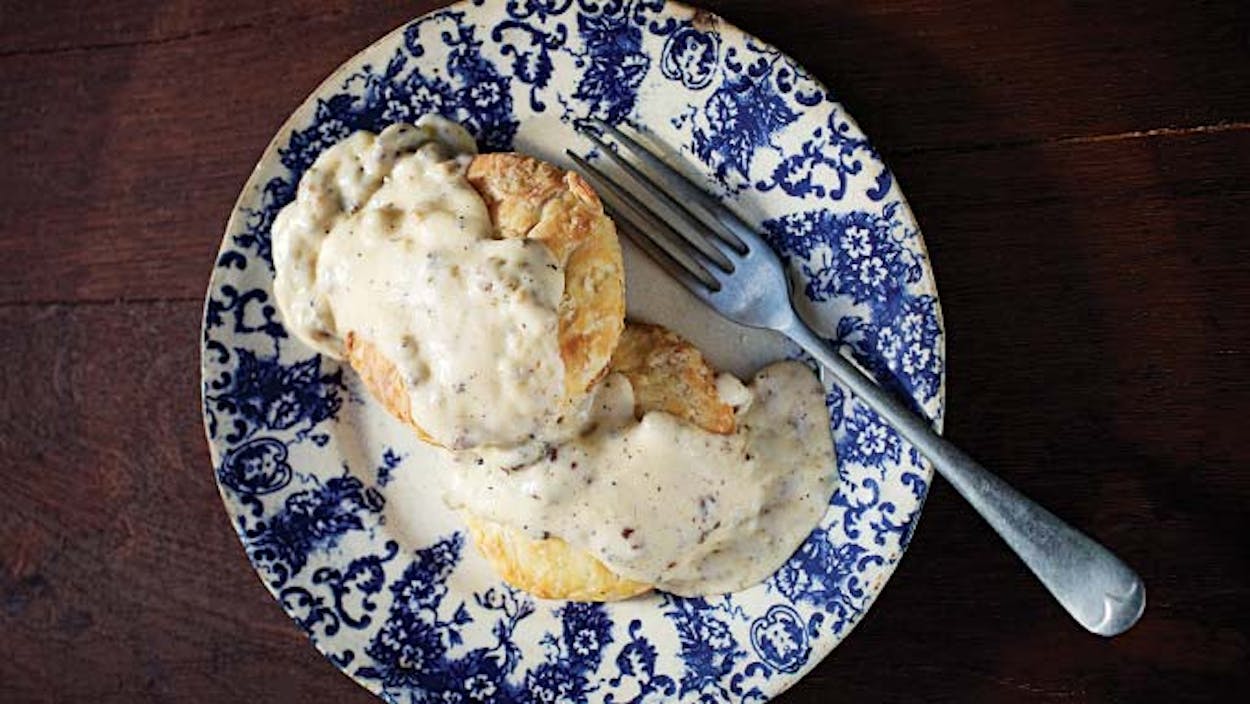Culinarily speaking, the American South is having a bit of a moment, and any chef worth his or her White Lily flour has a biscuit on the menu somewhere among the sorghum and scuppernongs. Of course, this latest food fascination is nothing new to our part of the country, where the fluffy rounds of flour and fat, once a fixture of almost every meal, sustained our cowboys, nurtured generations of their descendants, and even influenced our politics (“Pass the biscuits, Pappy!”). Nowadays, though, they seem to show up only at diners and the aforementioned haute-Southern restaurants.
As for the homestead, the biscuits eaten there are all too often of the twist-open-tube variety. People are intimidated by scratch-made biscuits, afraid they court certain disaster with a fourth of a teaspoon too much here, two too many seconds of kneading there. Stephen Harrigan, writing about his love of the balls o’ dough for this magazine back in 1984, suggests taking a few deep breaths and reminding yourself that you’re “merely the instrument through which the biscuits will find expression.” And I say if you mess them up—if they don’t rise to the occasion, so to speak—so what? Cream gravy hides a lot of flaws.
Biscuits
Makes about a dozen
2 cups all-purpose flour
1 tablespoon baking powder
1/4 teaspoon baking soda
1/2 teaspoon salt
2 tablespoons vegetable shortening, chilled
2 tablespoons unsalted butter, chilled
1 cup buttermilk, chilled
Preheat oven to 450 degrees.
In a mixing bowl, combine dry ingredients, then use your fingertips to quickly work the shortening and butter into the flour mixture; it should feel like coarse meal. Make a well in the flour mixture and add the buttermilk a little at a time, using a wooden spoon to stir just until a sticky dough forms.
Turn dough onto a floured surface, sprinkle with flour, and knead gently, four or five times (you can add more flour if the dough is sticky). Press the dough out into a round about 1/2 inch thick, then use a floured biscuit cutter to cut out the biscuits. Place biscuits on a baking sheet so they just touch. Bake for about 15 minutes, turning the baking sheet halfway through for even cooking, until the biscuits are raised and golden brown.
Sausage Gravy
Makes about 2 cups
1/4 pound breakfast sausage
1/4 cup all-purpose flour
2 cups whole milk, warm
Cook the sausage in a cast-iron skillet over medium heat until done, then remove with a slotted spoon. Drain off all but 2 to 3 tablespoons of the fat (you can add vegetable oil if you don’t have enough). Add the flour and stir, scraping up any bits on the bottom of the pan. Slowly add the warm milk, whisking constantly until smooth. Lower the heat and continue to stir until gravy is thick (if it’s too thick, you can add a little warm water). Stir in the cooked sausage and add salt and pepper to taste.
- More About:
- Recipes









